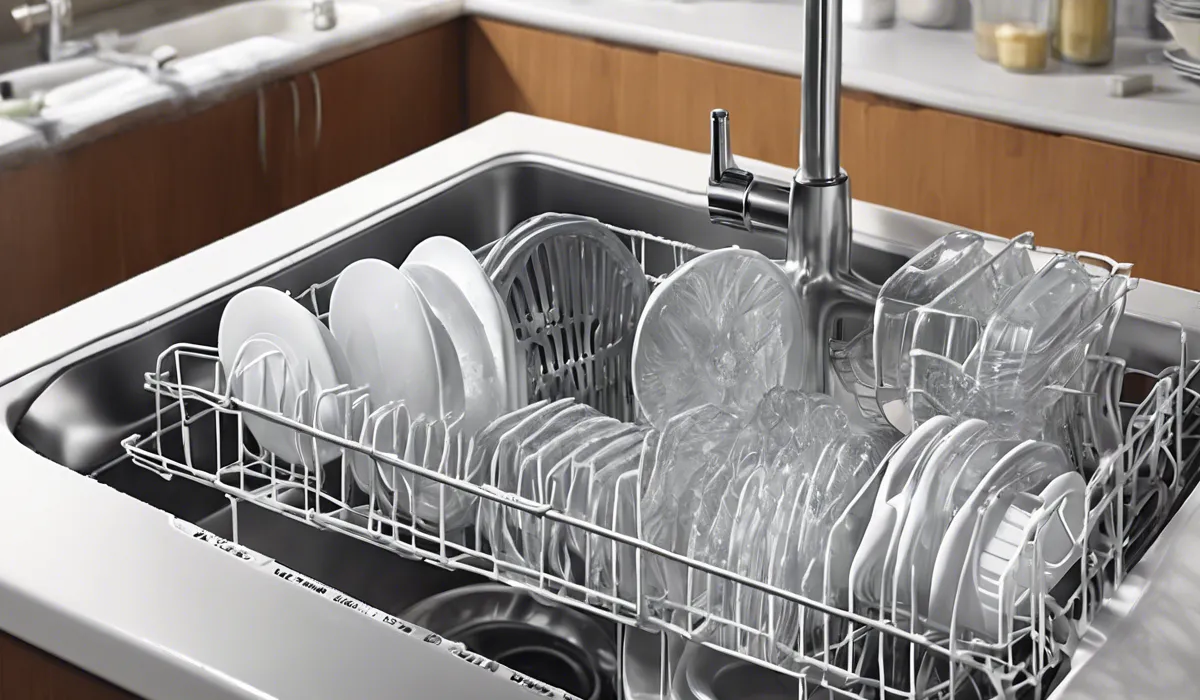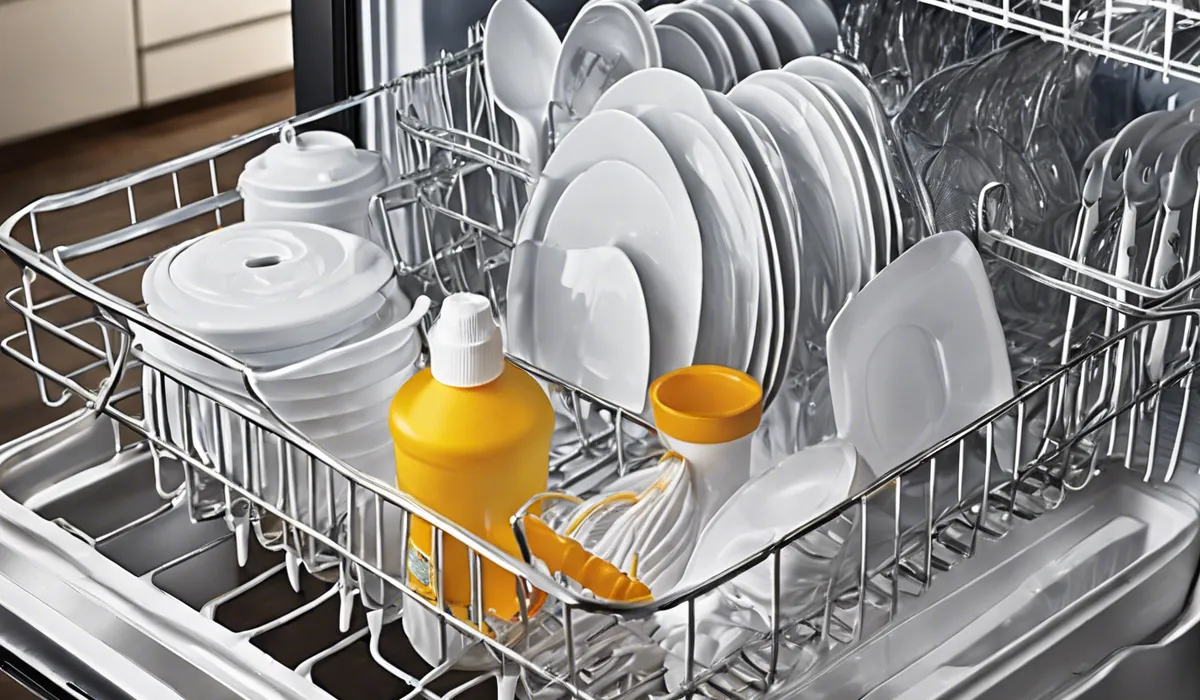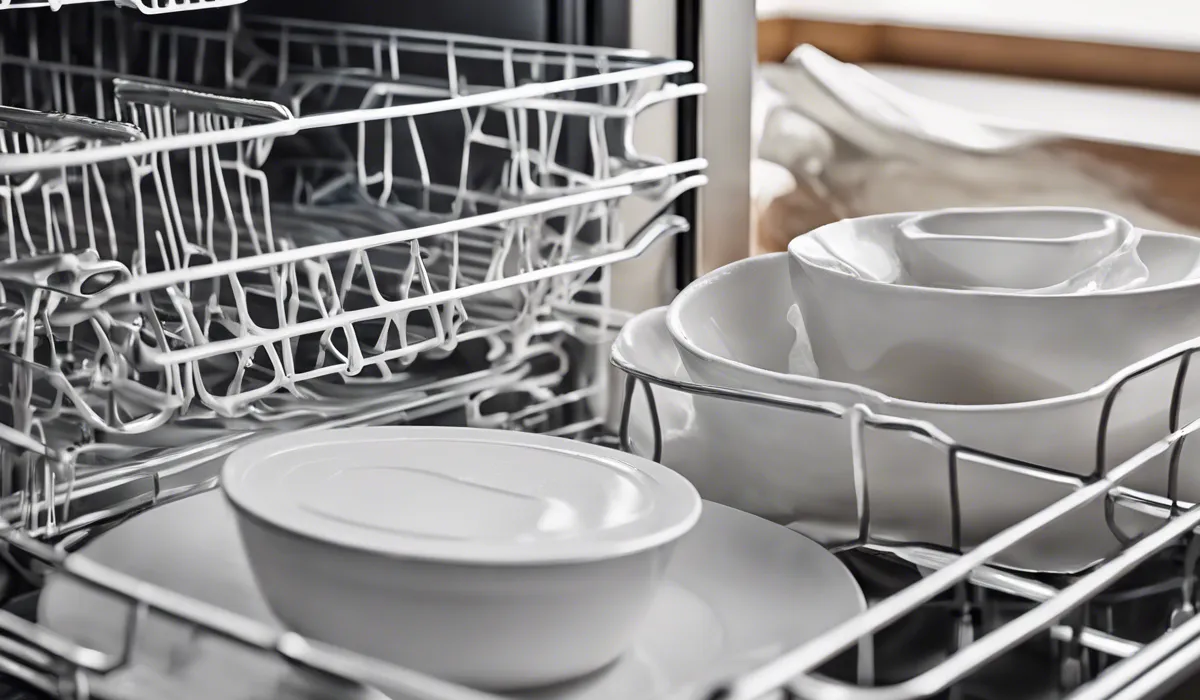How to Dry Plastic in Dishwasher: Quick & Spotless Results
To dry plastic in a dishwasher, use a heat dry or extended dry option if available. Ensure plastic items are angled properly for drainage. Avoid nesting and overcrowd to enhance air circulation. Open the door slightly after the cycle to release steam and aid drying.
Understanding Dishwasher-Safe Plastics

Identifying Dishwasher-Safe Symbols on Plastics
Plastic items often have symbols indicating whether they are safe to clean in a dishwasher.
Typically, these symbols resemble a plate or glass with water droplets above it or simply state ‘dishwasher safe.’ It is crucial to look for these symbols before placing any plastic item in the dishwasher to avoid damage from heat and water.
Types of Dishwasher-Safe Plastics
Plastics that can endure the intense environment of a dishwasher are usually high-quality materials like polypropylene and polycarbonate.
These plastics are designed to withstand high temperatures and exposure to water for extended periods without warping or melting.
Correct Placement of Plastics in the Dishwasher
Positioning plastic items in the dishwasher correctly is essential. It ensures even cleaning and avoids the direct heat from the dishwasher’s elements, which can deform or damage the plastic.
Usually, the top rack is the safest place for lightweight and heat-sensitive items.
Understanding the Heat Tolerance of Plastics
It is important to recognize that not all plastics have the same level of heat tolerance.
Some can only handle the dishwasher’s washing cycle but may not be suitable for high heat during the drying cycle. Always check the manufacturer’s guidelines for heat resistance.
Preparing Plastic Items for the Dishwasher

Rinsing Off Food Debris and Residue
Before loading plastics into the dishwasher, ensure they are free from food debris and residue.
A quick rinse under the tap can prevent clogging and helps the dishwasher clean more effectively. This step is particularly important for plastics, as they can easily retain grease and other particles.
Confirming Items Are Dishwasher Safe
Always verify that your plastic items are labeled as dishwasher safe. If you are unsure, check the manufacturer’s website or contact their customer service for clarification. This helps to avoid any potential damage to both the item and your dishwasher.
Optimal Placement for Drying
For optimal drying, place plastic items on the top rack of the dishwasher. This location safeguards them from intense heat and allows water to run off more easily. Ensure that the items are spaced out and angled to facilitate water drainage.
Understanding the Dishwasher’s Design
Dishwashers are designed with specific areas best suited for different types of dishes and utensils. Understanding your dishwasher’s design will help you place plastic items in the most effective spots for both washing and drying.
Optimizing the Drying Process for Plastics in the Dishwasher

Utilizing Rinse Aids
Adding a rinse aid to your dishwasher can significantly improve the drying process for plastics. It helps water droplets to form larger sheets, which then slide off surfaces more easily, reducing the chance of water spots and aiding in faster drying.
Choosing the Right Dishwasher Settings
Select a dishwasher setting that caters to plastic items. Some dishwashers have an ‘air-dry’ or ‘eco’ option that uses less heat, while others might offer a ‘heat dry’ setting for a more thorough drying process.
Assess which setting works best for your plastic items without causing damage.
Improving Airflow During Drying
Ensure that plastic items are not overcrowded in the dishwasher. This helps to improve airflow around each piece, which is critical for the drying process.
Additionally, avoid nesting items together as this traps moisture and prevents items from drying properly.
Adjusting Item Angles for Drainage
Angle plastic items to encourage water to drain off their surfaces. Cups and bowls should be placed upside down, while utensils with handles can be positioned at a downward angle to allow water to flow towards the tips.
Enhancing Post-Dishwasher Drying
After the dishwasher cycle, open the door slightly to let steam escape and help the drying process. If any items are still damp, wipe them with a clean towel or place them on a drying rack where they can air dry completely.
Regular Maintenance of the Dishwasher
Maintaining your dishwasher ensures it functions efficiently. Regularly clean the filters and check the spray arms to ensure they are not clogged. A well-maintained dishwasher will clean and dry your plastic items more effectively.
Using the Dishwasher’s Heat to Your Advantage
If your dishwasher has a heated drying option, use it to your advantage for plastic items. The heat accelerates the evaporation of moisture. However, be mindful of the types of plastic and their heat resistance to avoid any warping or damage.
FAQs About Drying Plastic in Dishwasher
How can I ensure my plastic dishes dry properly in the dishwasher?
To ensure proper drying, use the heat dry or extended dry option, position plastic items for better drainage, and avoid nesting or overcrowding.
What dishwasher setting should I use to dry plastic items?
Use the heat dry or extended dry option if your dishwasher has it to dry plastic items effectively.
Can I improve the drying of plastic items in the dishwasher?
Yes, improve drying by angling plastic items for better drainage and opening the dishwasher door post-cycle to release steam.
Why are my plastic dishes still wet after a dishwasher cycle?
Plastic dishes may remain wet due to improper angling, nesting of items, overcrowding, or not using heat-enhanced drying options.
Is it necessary to open the dishwasher door after the cycle for drying?
Opening the dishwasher door slightly after the cycle can release steam and help in drying plastic items.
Final Thoughts
Ensuring plastic dries efficiently in a dishwasher involves selecting heat or extended dry settings, positioning items for optimal drainage, and preventing nesting to improve air flow.
Post-cycle, slightly opening the dishwasher door to let out steam can further aid in the drying process, preventing moisture from lingering on your plastics.





